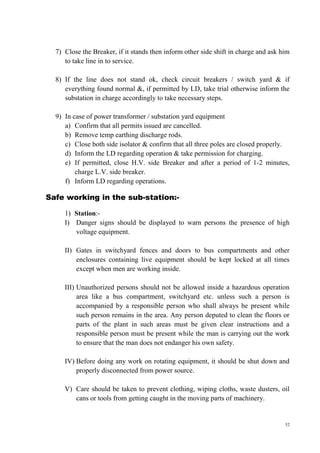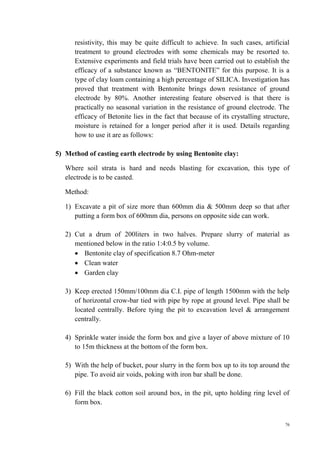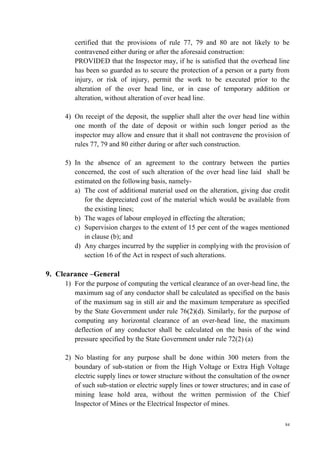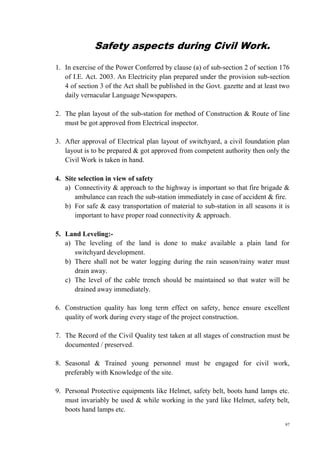This document provides a safety manual for an organization. It begins with the company's safety policy statement emphasizing the importance of employee safety. It then outlines various statutory requirements related to safety from the Electricity Act 2003, Electricity Rules 2005, and standards from the Central Electricity Authority and Bureau of Indian Standards. The document provides an index and proceeds to explain concepts like safety responsibilities, hazard identification, safety training, use of protective equipment, safety permits for work, earthing procedures, safety during construction and transportation, first aid, and treatment for electric shocks and burns.

































































































































